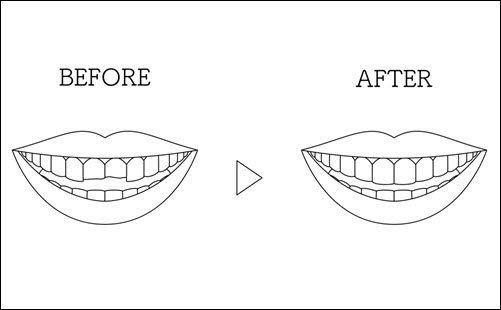Dental bonding improves the appearance and strength of teeth using a tooth-colored resin. Dentists apply and shape the resin to repair chips, cracks, and discoloration. The bonding material blends with natural teeth, creating a seamless, natural look. Bonding enhances smile symmetry and protects tooth enamel from further damage. The procedure is quick, painless, and non-invasive. Bonding improves tooth strength and function while preserving natural structure. It works well for both cosmetic and structural repairs. Understanding the benefits of dental bonding helps you decide if it’s the right solution for your smile. Let’s explore how dental bonding enhances both appearance and dental health.
Improves Tooth Appearance
 Dental bonding restores the natural look of chipped, cracked, or discolored teeth. The resin material matches the color of natural teeth, creating a seamless finish. Dentists shape and polish the resin to match the tooth’s natural contour. Bonding covers gaps between teeth, improves symmetry, and smooths uneven edges. It also brightens discolored teeth that don’t respond to whitening treatments. Bonding enhances smile balance and uniformity, improving overall confidence. The resin material resists staining and maintains its color for years. Better tooth appearance increases self-esteem and improves overall smile quality. Bonding provides a quick, affordable solution for cosmetic imperfections.
Dental bonding restores the natural look of chipped, cracked, or discolored teeth. The resin material matches the color of natural teeth, creating a seamless finish. Dentists shape and polish the resin to match the tooth’s natural contour. Bonding covers gaps between teeth, improves symmetry, and smooths uneven edges. It also brightens discolored teeth that don’t respond to whitening treatments. Bonding enhances smile balance and uniformity, improving overall confidence. The resin material resists staining and maintains its color for years. Better tooth appearance increases self-esteem and improves overall smile quality. Bonding provides a quick, affordable solution for cosmetic imperfections.
Quick and Non-Invasive Procedure
Dental bonding usually takes 30 to 60 minutes per tooth. The procedure requires minimal tooth preparation, preserving natural enamel. Dentists clean and lightly roughen the tooth surface before applying the bonding material. The resin bonds to the tooth using a special adhesive and curing light. No anesthesia is needed unless bonding repairs a decayed or sensitive tooth. After shaping and polishing, the bonded tooth blends with natural teeth. The entire process is painless and requires little recovery time. Patients can eat and drink normally after the procedure. Bonding provides fast, noticeable improvements with minimal discomfort. Quick treatment increases convenience and comfort.
Strengthens and Protects Teeth
Bonding strengthens weak or damaged teeth by adding a protective layer. The resin material supports cracked or chipped teeth, preventing further damage. Bonding also reinforces teeth with worn enamel, reducing sensitivity and improving bite strength. Properly bonded teeth resist pressure from chewing and grinding. The resin material distributes chewing forces evenly, reducing stress on adjacent teeth. Bonding seals small cracks and cavities, preventing bacterial buildup and tooth decay. Improved tooth strength reduces the risk of fractures and enamel loss. Stronger teeth improve overall oral health and function. Bonding increases tooth stability and chewing comfort.
Fixes Minor Alignment and Spacing Issues
Bonding closes small gaps between teeth and improves alignment. Dentists apply resin to reshape teeth and create a more even bite. Bonding corrects minor overlapping and crowding without the need for braces. The resin material smooths uneven edges and balances tooth size. Improved alignment enhances chewing efficiency and reduces jaw strain. Bonding also reduces plaque buildup by eliminating hard-to-clean spaces between teeth. Better alignment improves both tooth function and appearance. Closing small gaps and reshaping teeth increase smile symmetry. Bonding offers a fast and affordable solution for minor alignment issues.
Affordable and Long-Lasting Solution
Dental bonding costs less than veneers and crowns while providing similar cosmetic improvements. The procedure requires fewer dental visits and less preparation. Bonding material lasts between 5 to 10 years with proper care. Brushing, flossing, and avoiding hard or sticky foods extend the lifespan of bonded teeth. The resin resists staining but may discolor over time with smoking, coffee, or red wine. Regular dental cleanings keep bonded teeth looking bright and healthy. Compared to veneers and crowns, bonding provides a cost-effective option for improving tooth appearance. Affordable treatment increases access to cosmetic dental care.
How to Care for Bonded Teeth
Good oral hygiene protects bonded teeth and extends their lifespan. Brush twice daily with fluoride toothpaste and floss daily to prevent plaque buildup. Avoid biting hard objects like ice and pens to prevent chipping the bonding material. Limit consumption of coffee, tea, and red wine to reduce staining. Regular dental checkups ensure the bonded areas remain secure and healthy. Dentists can repair or touch up bonded areas if needed. Wearing a night guard prevents damage from teeth grinding. Proper care maintains bonding strength and appearance. Consistent oral hygiene keeps bonded teeth strong and bright.
Dental bonding improves tooth appearance, strength, and function. The quick, painless procedure restores chipped, cracked, and discolored teeth. Bonding strengthens weak teeth and protects enamel from further damage. It corrects minor alignment issues and improves bite efficiency. Bonding costs less than other cosmetic treatments while providing long-lasting results. Proper oral hygiene and regular dental care extend the lifespan of bonded teeth. Bonding enhances smile confidence and overall dental health. Investing in dental bonding creates a stronger, more attractive smile. Bonding provides an affordable, effective solution for cosmetic and functional tooth repairs.



